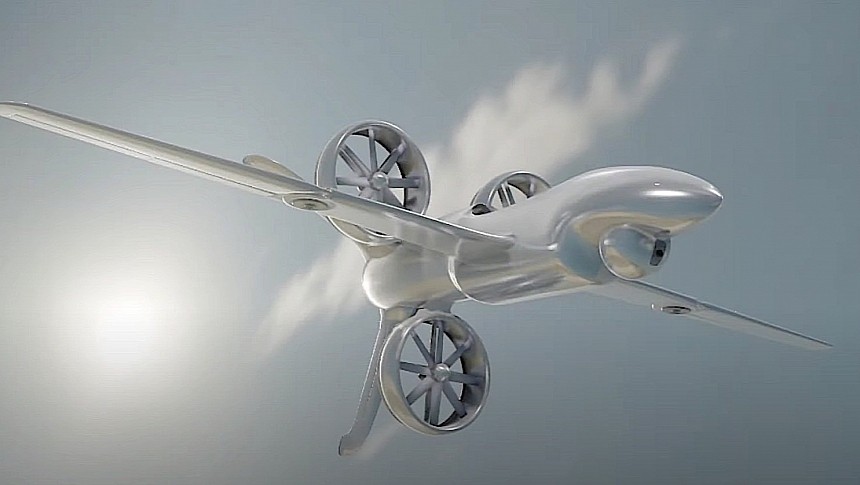It's only been several months since we first heard about DARPA's plan to develop a new and more capable VTOL drone for military use, and we now know the names of the companies working on the initial designs.
In a nutshell, DARPA wants a "vertical takeoff and landing (VTOL) uncrewed aerial system (UAS) that can be deployed and retrieved without the large mechanical launchers and landing/recovery equipment used today."
In words we can all understand, that would be an aircraft capable of operating on its own, and that doesn't need complex infrastructure and logistics for deployment and operation. The project was named ANCILLARY, which is a forced acronym for AdvaNced airCraft Infrastructure-Less Launch And RecoverY.
In September 2022, DARPA presented the idea before interested parties during a Proposers' Day. It seems to have caused quite a stir in the industry, as plenty of big names from the list signed up for the project. And we now know who will be moving forward with ANCILLARY.
No less than nine players from the defense and aerospace industries have been selected by DARPA: AeroVironment, AVX Aircraft, Griffon Aerospace, Karem Aircraft, Leidos, Method Aeronautics, Northrop Grumman, Piasecki Aircraft, and Sikorsky.
All of them will have to come up with the "initial operational system and demonstration system conceptual designs" for the drone. They'll have to do this over the course of the next six months, while being careful to include in the design U.S. Navy and Marine Corps mission capabilities.
DARPA will then have these nine projects and study them, and will then decide which one can move forward to become an experimental aircraft for testing.
At the end of it all, we should be left with a machine that takes off and lands like a helicopter, making it ideal for use off the deck of small ships and remote locations. It needs however to fly its missions like an airplane, and will also need to be able to carry "a significant amount of payload for a variety of missions," according to program manager Steve Komadina.
That's something many of the present-day civilian VTOL concepts can do, and taking into account the experience of the nine companies involved, we should be left with some really impressive ideas when ANCILLARY ends.
Speaking of which, DARPA plans to have a concept in the air, testing configurations and technologies, as soon as 2026. It's unclear whether the experimental airplane will become series production as is, but it's likely many of the tech developed for it will go on to be included in other VTOLs, at first military and then, with a bit of luck, maybe even civilian.
We'll keep an eye out for more details on this story, and with so many parties involved and such a short timeframe, it's likely we’ll know more about ANCILLARY designs soon.
In words we can all understand, that would be an aircraft capable of operating on its own, and that doesn't need complex infrastructure and logistics for deployment and operation. The project was named ANCILLARY, which is a forced acronym for AdvaNced airCraft Infrastructure-Less Launch And RecoverY.
In September 2022, DARPA presented the idea before interested parties during a Proposers' Day. It seems to have caused quite a stir in the industry, as plenty of big names from the list signed up for the project. And we now know who will be moving forward with ANCILLARY.
No less than nine players from the defense and aerospace industries have been selected by DARPA: AeroVironment, AVX Aircraft, Griffon Aerospace, Karem Aircraft, Leidos, Method Aeronautics, Northrop Grumman, Piasecki Aircraft, and Sikorsky.
All of them will have to come up with the "initial operational system and demonstration system conceptual designs" for the drone. They'll have to do this over the course of the next six months, while being careful to include in the design U.S. Navy and Marine Corps mission capabilities.
DARPA will then have these nine projects and study them, and will then decide which one can move forward to become an experimental aircraft for testing.
At the end of it all, we should be left with a machine that takes off and lands like a helicopter, making it ideal for use off the deck of small ships and remote locations. It needs however to fly its missions like an airplane, and will also need to be able to carry "a significant amount of payload for a variety of missions," according to program manager Steve Komadina.
That's something many of the present-day civilian VTOL concepts can do, and taking into account the experience of the nine companies involved, we should be left with some really impressive ideas when ANCILLARY ends.
Speaking of which, DARPA plans to have a concept in the air, testing configurations and technologies, as soon as 2026. It's unclear whether the experimental airplane will become series production as is, but it's likely many of the tech developed for it will go on to be included in other VTOLs, at first military and then, with a bit of luck, maybe even civilian.
We'll keep an eye out for more details on this story, and with so many parties involved and such a short timeframe, it's likely we’ll know more about ANCILLARY designs soon.











